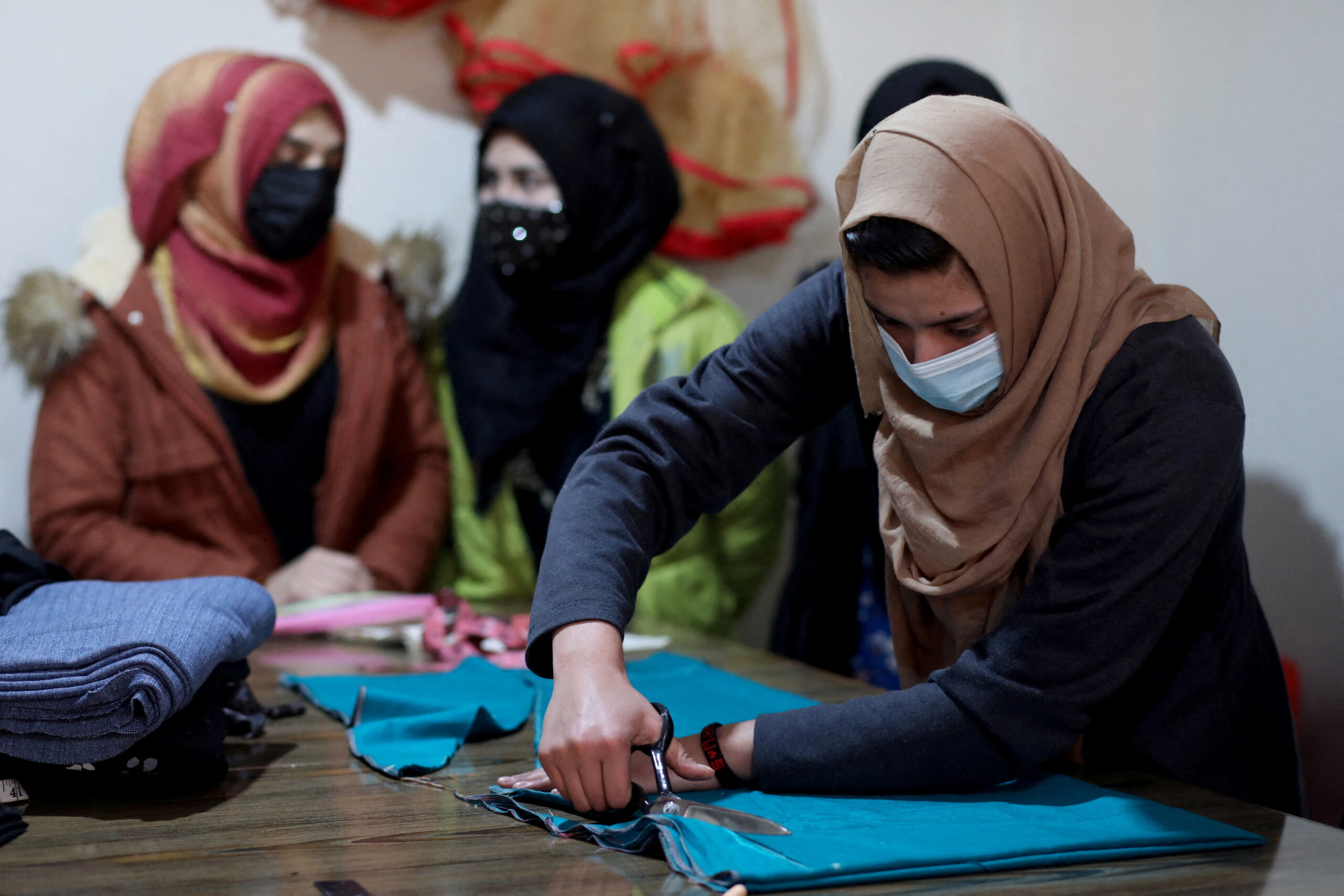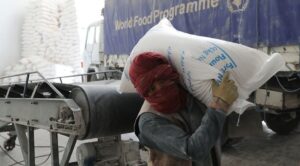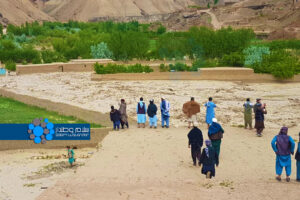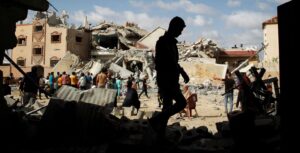KABUL (SW) – The dawn of 2024 brings no respite in the plight of Afghan women and girls reeling from persisting restrictions and tragedies as Salam Watandar takes a glance at some of the key events that shaped their lives in 2023.
This report delves into the events of the past couple of years,, drawing insights from research reports and narratives meticulously published and broadcasted by Salam Watandar along with interviews with a wide range of Afghan women from the different provinces.
In the deepest layers of Afghanistan’s political community, the voices of women often remain unheard; therefor, Salam Watandar as its social mission to cover the issues related to women throughout 2023, has prepared and published numerous reports with diverse content, shedding light on various aspects of Afghan women’s lives.
Salam Watandar’s findings, encapsulated in 30 research reports on women’s lives in various areas of Afghanistan during 2023, reveals that after the recent political changes, women in Afghanistan are facing critical challenges across multiple spheres. The imposed restrictions by the de-facto government have particularly affected women in economic, psychological, legal, and social constraints. One poignant tragedy has been the economic limitations on women who serve as the primary providers for their families.
In the process of compiling these reports, Salam Watandar conducted interviews with 1026 women, 33 experts from various fields, 17 women’s rights activists, 18 government officials and spokespersons, and 7 representatives from non-governmental organizations.
Women’s social exclusion
In an effort to survey the nuanced realities faced by Afghan women, Salam Watandar has conducted in-depth research reports through interviews with 26 female defense lawyers, 20 female athletes, 18 female cinematographers, 24 female make-up artists, 16 female military personnel, 30 women who cannot secure work permits in sectors for women, and 13 women who have been dismissed from governmental and non-governmental offices. The findings also shed light on the fate of safe houses for homeless women.
These reports reveal that Afghan women are grappling with unprecedented structural and legal deprivations, resulting in severe psychological and economic challenges.
Some women have chosen or are looking to migrate out of Afghanistan, while others endure difficult conditions within Afghanistan. The findings indicate instances where unemployed women have resorted to begging or working as domestic workers as a means of survival.
Women’s economic crisis
The role of women in Afghanistan’s economic landscape has historically been constrained by social norms, leading to limited investment opportunities in various sectors for women. However, over the past two decades, Afghan women, from engaging in small investments to establishing income-generating workshops, emerged as significant contributors to the country’s economy.
Unfortunately, following the collapse of the Afghan Republic, this sector, predominantly driven by women, has faced severe setbacks. Therefore, Salam Watandar has produced comprehensive investigation reports last year, delving into the income and economic status of women.
The report consisted of interviews with 23 businesswomen and female industrialists, as well as 21 women actively engaged in fields promoting women’s economic participation. The gathered data shed light on the critical economic situation faced by Afghan women.
Businesswomen and industrialists highlighted that the constraints imposed on women have made their work increasingly challenging and vulnerable, leading to a significant decrease in their income.

Women, girls denied aid
Salam Watandar’s findings, based on interviews with 21 female selling goods on the streets, 28 female beggars, and 22 female child laborers in Kabul, exposes a disheartening situation where many of these women and children have been prohibited from working on the streets by the de-facto government. Shockingly, this ban is implemented without providing any financial aid or engaging them in capacity-building programs.
The interviewed women, forced to work on the streets due to poverty and need, find themselves in a precarious position, struggling to fend off hunger. According to the findings, these women have not received any financial assistance.
Women and institutionalized violence
Delving into the historical context of violence against women, Salam Watandar has conducted a survey shedding light on the number and nature of instances. The survey, covering 27 provinces and consisting of interviews with 326 women, exposed alarming statistics that underscore the severity of the problem.
Salam Watandar’s findings reveal that three out of every four women who were interviewed, have faced some form of violence. Among the various types of violence, psychological violence has emerged as the most prevalent, affecting a staggering 54% of the surveyed women.
Women’s health woes
Salam Watandar’s recent survey delving into the status of midwives across the nation shows a shortage of job opportunities for these essential healthcare providers. The report, based on interviews with 36 midwives nationwide, shed light on the significant challenges with implications for women’s access to crucial health services.
Among the major hurdles identified, the shortage of health facilities, insufficient income, and a lack of employment opportunities for midwives are significant challenges. These challenges not only affect the professional well-being of midwives but also have affected the overall accessibility of health services for women in the country.
Salam Watandar has also conducted a survey across 17 provinces that shows women’s access to health services faces considerable obstacles in 13 of them. Officials from eight provinces cited the lack of health services for women, scarcity of female health workers, and inadequate health equipment as the primary reasons for the challenges encountered in delivering health services to women.

Women journalist under threat
Since the collapse of the Republic in Afghanistan, there has been a noticeable decline in the presence of women in the media.
In a comprehensive report by Salam Watandar, officials from 55 media outlets and 17 journalists were interviewed to gauge the extent of the issue. The data obtained shows a 66% decrease in the presence of women across these media outlets. Prior to the establishment of the de-facto government of the Islamic Emirate, 831 women were employed in various roles within the media outlets. However, under the rule of the de-facto government, this number plummeted to 288 women.
The Afghan Independent Journalist Union reports an 81% decrease, while the Committee for the Protection of Afghan Journalists reported a 70% decrease in the presence of women in the country’s media.
No legal aid for women
In Afghanistan, entrenched traditional norms and a lack of specific legal mechanisms have led to significant legal complications for women, affecting their rights in legal disputes and family decisions. Salam Watandar’s investigative reports in this domain bring to light the challenges faced by Afghan women as they grapple with legal issues, particularly in matters concerning family formation and inheritance.
Salam Watandar has interviewed a diverse group to highlight the narratives of six women deprived of their children’s guardianship rights, 74 widows, four victims of forced and underage marriages, 30 girls experiencing discrimination within their families, as well as 19 divorced women, 19 women with polygamy cases, and 17 women who have been deprived of their inheritance rights.
The obtained data shows that women remain vulnerable in the legal areas when seeking protection and securing rights.






